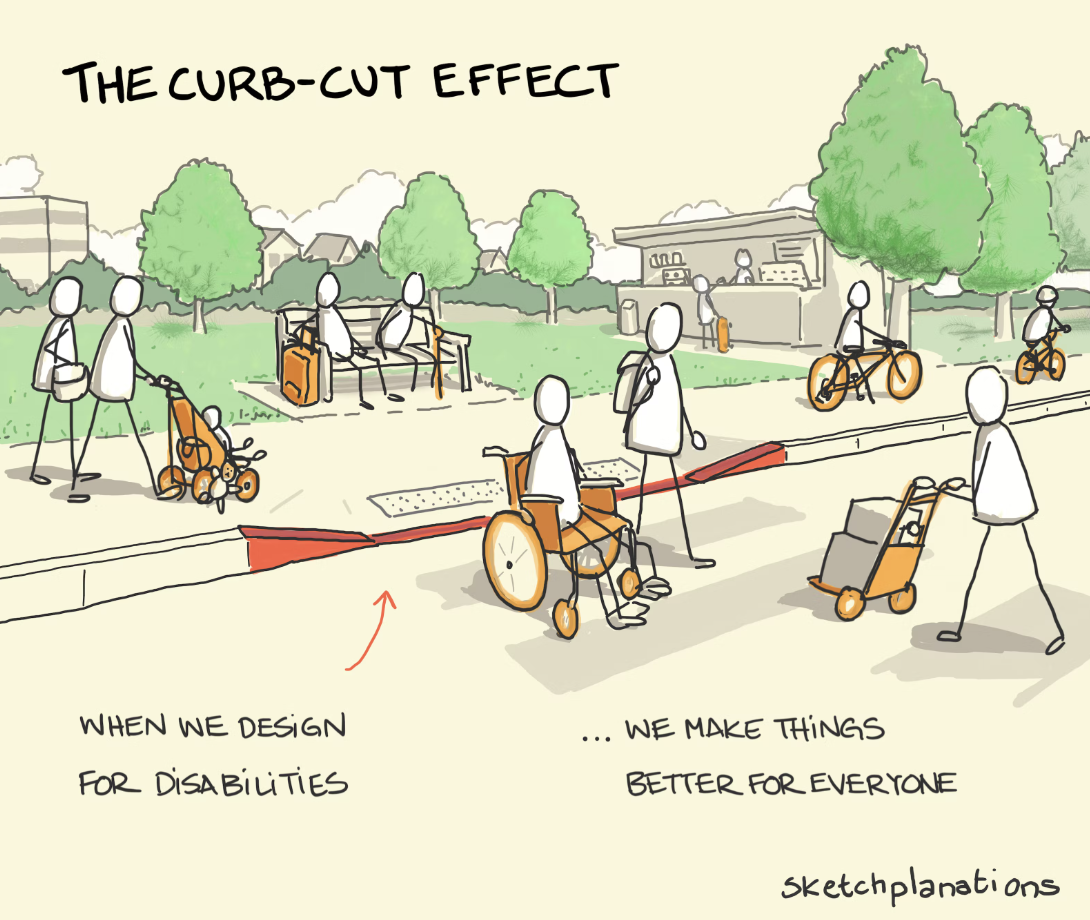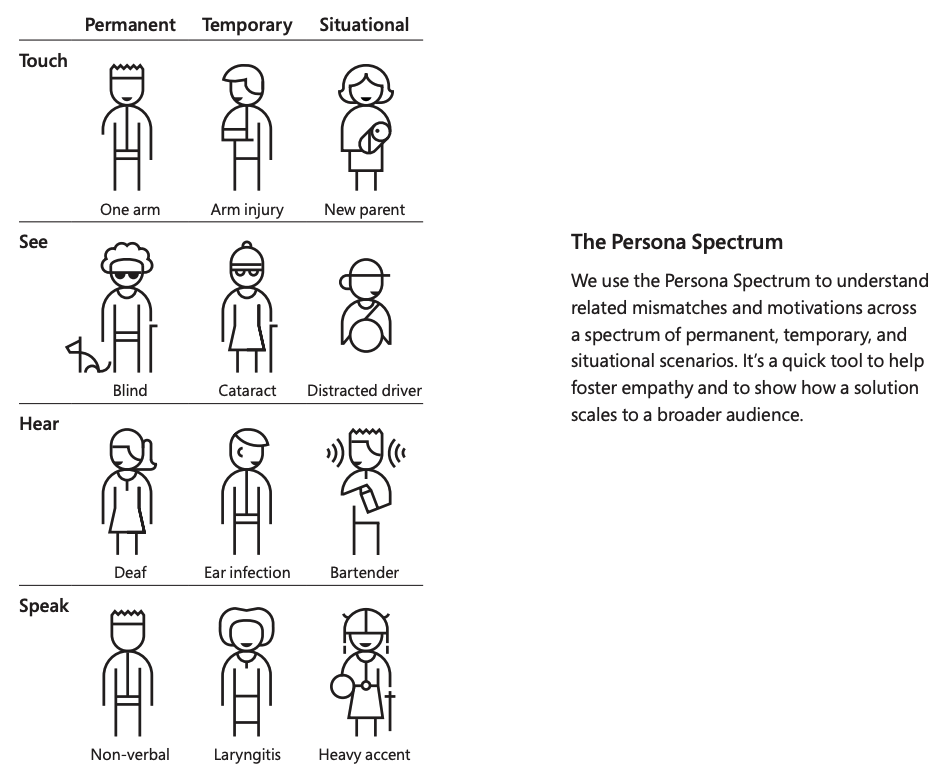The People
According to the latest WHO data (December 2022), an estimated 1.3 billion people — or 1 in 6 people worldwide — experience significant disability. This number is growing due to people living longer (the data from 2020 suggested that this number was 1 billion, or 1 in 7) and the rise of non-communicable diseases.
Since 16% of the global population lives with some form of disability, we can safely assume that the percentage of users with disabilities using our products is somewhat similar. However, the digital needs of people with disabilities are still getting overlooked.
Persons with disabilities are a diverse group, and factors such as sex, age, gender identity, sexual orientation, religion, race, ethnicity, and economic situation affect their life experiences and health needs. Disability is just one of the factors shaping their identity and needs. Still, the barriers we put in our products when we create them without accessibility in our minds may seriously hinder their ability to use them.
But it’s not only the users who are at a loss when the products are not accessible; the loss is there for businesses, too. In the UK only in 2019, it is estimated that online retail businesses lost £17 billion because people with disabilities abandoned their carts due to digital barriers. More than 70% of potential disabled customers experience difficulties on more than a quarter of the websites they visit. This group of people is willing to spend money, and by not catering to specific needs that disabled people have, everyone is at a loss.
Possibilities with accessibility are limitless, and both users and the business are in a win-win situation if the digital product is indeed accessible to every user.
The Curb-cut Effect
The curb-cut effect is the phenomenon of disability-friendly features being used and appreciated by a larger group than the people they were designed for. It got its name from curb cuts — miniature ramps comprising parts of the sidewalk — first made for wheelchair users. Still, today it’s widely used by everyone and is no longer recognized as an accessibility feature.

As we can see in this simple sketch made by Sketchplanations, although curb cuts were designed primarily for wheelchair users, they are making things easier for a much wider group — whether you are riding a bike or skateboard, carrying a suitcase, or pushing a baby cart — your experience of going down the curb will be much better. The same thing applies to digital products.
Situational disability
The persona spectrum mentioned in the Microsoft Inclusive 101 design toolkit explains this phenomenon in more detail. Here we can see that disability can not only be permanent, but it can be temporary or situational (often, it is not even visible).

With this in mind, we can see how accessible features in digital products can help a much wider group than the 1.3 billion people mentioned before.
If we make sure that all video and audio content in our app has closed captions, we will make it accessible not only to people with permanent hearing impairments but also to the ones with temporary and situational disabilities; for example, to people with ear infections or somebody in public transport whose AirPods run out of battery, and they want to watch the content at that very moment.
Similarly, if we make sure that our app has a proper contrast, it will help people with sight impairments, but it will be useful to everyone trying to use our app outdoors on a bright, sunny day. Let’s make sure that app has touch targets of proper size, too. It will be useful not only to people with permanent dexterity issues but also to someone pushing a shopping cart in the grocery store with only one hand available.
You see where we go with this.
Laws and regulations
Although we firmly believe that all software should be accessible regardless of the penalty (we are more carrot than stick people in this case), it is important to keep in mind that most countries have laws and regulations which can make you subject to a lawsuit if your application or website is considered not accessible. Here you can find a list of lawsuits filed in the USA.
In some parts of the world, these laws and regulations apply only to government or government-financed apps and websites; in others, they apply to all.
Since we are not lawyers, this chapter will only go into a little detail. You can read more about US regulations here and EU regulations here, and of course, check the details with your legal department.
The most important takeaway is that all of the regulations take WCAG as their reference when deciding if the application/website is accessible or not. If you make sure that your app is following WCAG AA guidelines, then your chances of getting sued over inaccessible content are dropping tremendously.